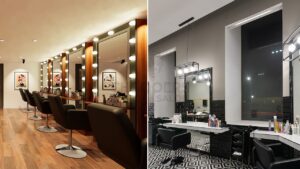Introduction to PRP Therapy
A state-of-the-art medical procedure called platelet-rich plasma (PRP) therapy uses the body’s ability to heal to restore and regenerate tissues. PRP treatment helps to boost the overall regeneration of tissues, improve collagen formation, and stimulate cellular repair by collecting platelets from the patient’s circulation and infusing them into specific locations. Numerous medical specialties, including sports medicine, orthopedics, and dermatology, have benefited from the use of this creative method.
Add Your Heading Text Here
PRP treatment is administered starting with a small sample of the patient’s blood. Next, by rapidly centrifuging the blood, the constituent components are separated. Through centrifugation, the platelets and plasma are extracted from the red and white blood cells in this method. The finished product is a refined blend that is high in growth factors and proteins necessary for the regeneration and repair of tissue.
PRP Injection Formulation
PRP is meticulously injected into the desired location once it has been prepared. These injections can be used in the head for loss of hair, on the forehead for skin renewal, or the joints and tendons for damage healing, depending on the therapy. PRP’s growth factors promote collagen synthesis, tissue regeneration, and cellular repair, which improves the results of healing and rejuvenation.
PRP therapy’s anti-aging properties have made it especially well-liked in the dermatological field. PRP injections also referred to as the “vampire facial,” are used for face rejuvenation and can lessen the visibility of scars, fine lines, and wrinkles.After the procedure, patients frequently comment on their skin’s enhanced texture and natural radiance.
Uses in Orthopedics and Sports Medicine.
PRP has demonstrated potential in sports medicine and orthopedics for the medical management of chronic injuries and for quickening the healing of acute injuries. PRP injections are beneficial for athletes and others with illnesses including osteoarthritis, tendonitis, and ligament problems. With the added benefits of accelerating the healing process, encouraging tissue repair, and maybe lowering the need for more invasive procedures like surgery, these injections help manage pain and inflammation.
PRP-Assisted Hair Repair
PRP treatment has become more and more popular in the field of regaining hair. PRP injections into the scalp can promote hair follicle development and boost hair density in those with androgenetic alopecia or hair loss. In the long run, thicker, fuller hair results from the growth factors in platelet-rich plasma (PRP), which also strengthen hair follicles and extend the development stage of the hair cycle.
Protection and Thoughts
Even with all of its advantages, PRP therapy has drawbacks. People must speak with licensed healthcare providers to find out if PRP is appropriate for their particular needs. PRP’s efficacy can be influenced by variables including the patient’s general health, the seriousness of the ailment being treated, and the patient’s unique reaction to the therapy. Furthermore, because PRP uses the patient’s blood, it is typically safe with little chance of negative responses. However, the operation must be carried out by qualified professionals.
Prospects for PRP Therapy
Research into novel uses and the improvement of current procedures indicates a potential future for PRP treatment. Growing knowledge of PRP’s potential and processes will probably lead to even more extensive and successful usage of PRP in treating a wider range of illnesses. To further enhance results, innovations like boosting the quantity of growth factors or mixing PRP with other therapies are being researched.
Conclusion:
As a result, PRP therapy encourages tissue regeneration and repair by utilizing the body’s own healing capacities. Being able to treat a wide range of medical and cosmetic disorders with its adaptability makes it an important tool in modern medicine. PRP therapy is a safe and efficient option for patients looking for relief from chronic ailments and rejuvenation by increasing the creation of collagen, decreasing inflammation, and speeding up the healing process. PRP is anticipated to play a larger part in medical therapy as research advances, opening up new avenues for improving health and wellbeing.
FAQs (frequently-asked questions)
PRP (Platelet-Rich Plasma) treatment is a medical procedure that involves drawing a small amount of a patient’s blood, processing it to concentrate the platelets, and then injecting the concentrated platelets back into the patient’s body to promote healing and tissue regeneration.
PRP therapy is used to treat various conditions, including hair loss (androgenetic alopecia), skin rejuvenation (reducing wrinkles and scars), orthopedic injuries (tendinitis, ligament injuries), and chronic pain from conditions like osteoarthritis.
PRP therapy works by utilizing the growth factors and proteins in platelets to stimulate the body’s natural healing processes. When injected into targeted areas, PRP promotes cellular repair, collagen production, and tissue regeneration, enhancing recovery and rejuvenation.
Yes, PRP treatment is generally considered safe because it uses the patient’s own blood, minimizing the risk of allergic reactions or infections. However, it should be performed by qualified medical professionals to ensure proper technique and safety.
The number of PRP sessions needed varies depending on the condition being treated and the individual’s response to the therapy. Typically, patients may require multiple sessions, spaced several weeks apart, to achieve optimal results. Your doctor will recommend a treatment plan tailored to your specific needs




